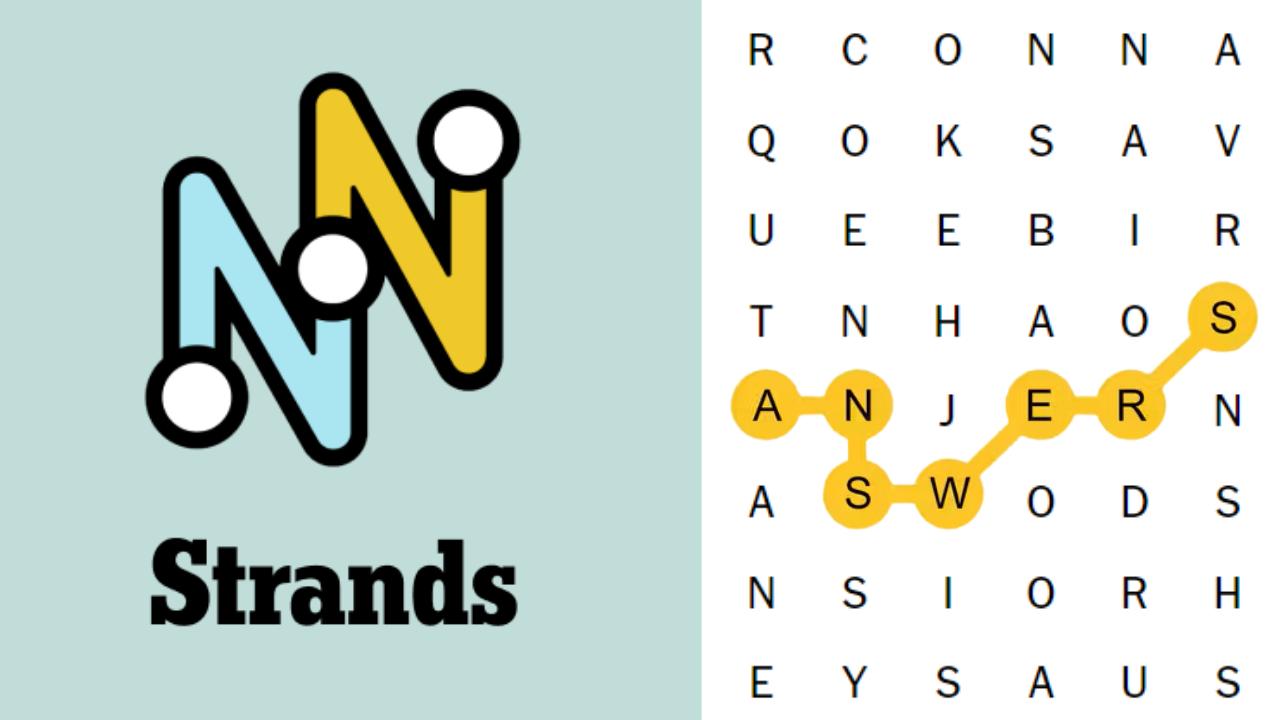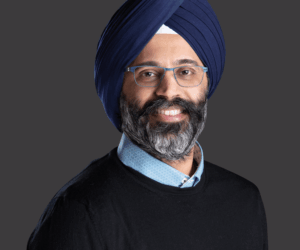Answer Engine Optimization (AEO) turns the open web into a single machine-crafted answer. As AI shifts from data sources to answers, the incentives built into AEO may determine whether truth itself can endure.
getty
The internet used to send you on a journey. You typed a question, sifted through links, and decided what to trust. Now, a new layer has emerged: AEO (Answer Engine Optimization). Instead of surfacing sources, AI systems generate the answer itself. That answer is shaped by whoever can game the system, and increasingly, it arrives with no friction, no context, and no competing voices.
At first glance, AEO sounds like marketing jargon. In practice, it shifts the goalposts for what constitutes truth itself. If the “answer engine” replaces the open web, then the inputs and incentives behind those answers decide not just what we read, but what reality becomes visible at all.
And here’s the part that should make us stop cold: research shows that roughly 70% of people take information at face value, without questioning or verifying it. Seven out of ten of us will accept what the machine serves up as truth: no caveats, no friction, no second source.
Layer capitalism on top of that, and the risk compounds. Reality itself becomes shoppable, optimized, and sold to the highest bidder. Whoever can pay to shape the answer gets to define the truth. And 70% of the population will buy it, literally and figuratively. We already see this in politics. How’s that going? When reality is auctioned off, the outcome isn’t knowledge. It’s manipulation, on an industrial scale.
We’ve already seen the consequences of a world where reality can be denied. Earlier this month, a video circulated showing items being tossed from an upstairs White House window. President Trump publicly dismissed it as “AI.” Hours earlier, his own press team had seemed to verify the clip’s authenticity, and digital forensics expert Hany Farid confirmed that there were no tell-tale signs of manipulation, shadows, motion, or even the flags’ movement, all of which checked out. Yet the denial stuck. A verified event was waved away as synthetic.
That is the danger AEO amplifies. When optimization, not verification, decides what counts as the “answer,” anything inconvenient can be made invisible, and any truth can be erased.
The Rise of AEO
Most readers are familiar with SEO, or Search Engine Optimization, the practice of tailoring content to help Google rank it higher. But as search shifts from links to answers, a new term has emerged: AEO or Answer Engine Optimization.
Instead of pointing you to websites, AI systems like ChatGPT, Perplexity, and even Google’s new AI Overviews synthesize a single response. And that response is now the battlefield: companies and influencers are already optimizing to shape what the machine says back to you.
At first glance, AEO appears to be marketing jargon. In practice, it shifts the goalposts for what constitutes truth itself. If the “answer engine” replaces the open web, then the inputs and incentives behind those answers decide not just what we read, but what reality becomes visible at all.
That’s why AEO isn’t just another acronym. It’s the new terrain where truth, accountability, and power intersect.
AEO and a Child’s Question
I’ve spent decades building synthetic worlds and artificial life. But the sharpest question about reality came from my son.
When my son was four, we had just moved to a new community after being washed out by Hurricane Sandy. Our first July 4th there, fireworks burst overhead as we lay side by side on a blanket in a field under the night sky. He whispered, “Daddy, is that real?”
At the time, I took it as a beautiful thing, a validation that technology had brought us to an era where synthetic content forces us to ask those questions. I flashed back to my own childhood, with 8-bit Atari games and MUDs on monochrome terminals, using floppy disks. After a career building online communities, synthetic worlds, VR, AR, and artificial life, my son had validated the work by asking me.
In hindsight, my son was giving me a warning about the coming reality crisis.
Platforms, Publishers, and AEO
Part of today’s reality crisis is legal. Section 230 of the Communications Decency Act generally prevents treating online services as the “publisher or speaker” of third-party content. That made sense in 1996, when platforms looked like neutral pipes. In 2025, feeds are anything but neutral: they curate, rank, and monetize what we see.
Now add a new layer: AEO. Instead of surfacing a list of links, platforms, and AI models, they increasingly generate the answer itself. That shifts them even further from neutral pipes into active authorship. And yet they’re often still shielded from liability for user content by §230’s broad immunity; §230 does not protect content a service develops itself—but whether AI outputs qualify is an unsettled legal question.
This isn’t a call to abolish §230. It’s a recognition that responsibility hasn’t kept pace with reality-shaping power, including for algorithmic recommendations and now AEO-driven answers that will increasingly define what people see as “truth.”
AEO and Immunity in the Age of AI
The debate isn’t theoretical. At the Axios AI + DC Summit, Senator Ted Cruz argued that courts will likely interpret Section 230 to extend immunity to AI systems themselves, effectively treating synthetic outputs, such as AI-generated content, like user posts for liability purposes. Cruz also touted a federal “regulatory sandbox” to give companies broad latitude to experiment.
The rhetoric is framed as protecting free speech; the practical risk is expanding protections first and building accountability later. And with AEO on the rise, the stakes are sharper: if immunity is extended, we may be granting legal cover to machines that are optimized to decide the answer themselves.
That’s the contradiction at the heart of the §230 debate in the AI era: lawmakers want to preserve the spirit of internet freedom, yet may end up protecting something far more corrosive—the industrial-scale manufacture of plausible fictions.
Censorship, Hallucination, Neutrality, and AEO
Our vocabulary has collapsed:
- Censorship once meant state suppression; now it’s hurled at everything from content moderation to an AI model declining a prompt.
- Neutrality is claimed by systems whose algorithms actively author our feeds. AEO makes that claim even less credible: the “neutral” answer is already engineered.
- Hallucination is the LLM’s talent for fluent fiction, yet it arrives through the same channels as journalism with the same surface plausibility.
- Truth is reduced to perception: if something looks real enough, or enough people deny it, it occupies the same space as fact.
This dynamic empowers what law professors Robert Chesney and Danielle Citron call the liar’s dividend: as synthetic media proliferates, bad actors can dismiss authentic evidence as fake and evade accountability. And the risks aren’t theoretical, as deepfakes are already fueling social engineering attacks at scale.
AEO as Censorship by Design
We need to be clear: AEO is being designed to censor. It’s not more complicated than that. And censorship, at its core, is about preserving secrecy.
When a model runs on synthetic data that is itself proprietary IP, the layers of opacity compound, the training set is hidden, the weights sealed, and the reasoning becomes a black box. You can’t see how it arrived at conclusions, or what was silently filtered, suppressed, or omitted along the way.
This is not the open discourse of a publisher accountable to public scrutiny. It’s the shielding of meaning itself. Accept this uncritically, and we normalize a reality where truth isn’t contested in daylight but pre-filtered in darkness.
When the AEO Alarm System Lies
Detection isn’t a backstop anymore; it’s a new attack surface. A recent study, “Where the Devil Hides: Deepfake Detectors Can No Longer Be Trusted,” demonstrates how third-party training sets for deepfake detectors can be poisoned, enabling the detector to learn a hidden backdoor. Show an invisible trigger and the detector mislabels forged media as authentic (or vice versa).
The researchers demonstrate passcode-controlled, semantic-suppression, adaptive, and invisible triggers under both dirty-label and clean-label regimes. In plain English: you can booby-trap the smoke alarm so it serenely purrs while the house burns.
It completes the opacity loop. First, we privatize the inputs (proprietary synthetic data). Then the model (sealed weights/policies). Now, according to this research, we can privatize the fail state, allowing detectors to fail on demand predictably. “Verification” itself becomes selectively disabled. And organizations are already being warned to prepare for this reality.
The Need for Friction in the Age of AEO
Earlier this month, I spoke at Babson College, invited by Professor Davit Khachatryan, who leads the AI & ML Empowerment lab at The Generator, the school’s interdisciplinary AI collaboration. The event, part of Babson’s Generator Lab series, was centered on a simple yet urgent theme: how do we preserve meaning in a world optimized for prediction and automation?
In that talk, I argued that friction, imperfection, and even so-called “wasted” time are not defects in the human system—they are the foundation of meaning itself.
As Professor Davit Khachatryan of Babson put it:
“Serendipity, playful experimentation, and fruitful omissions are not weeds to be uprooted. These are fledgling sprouts that need to be preserved, to be watered, and to be brought to fruition. Wipe these out and you get a vapor garden.”
Friction is not the enemy of progress; it’s the test of reality. Infinite scrolls, auto-play, predictive answers, these smooth out the detours and disagreements that make truth testable. Myths, which I used as examples in the Babson lecture, have survived across generations not because they were efficient, but because they were retold, argued, and reinterpreted. Friction gave them weight.
Five Things You Can Do About AEO
If you’re a leader, policymaker, or simply someone trying to navigate a collapsing reality, there are steps you can take:
- Ask about AEO. Don’t just ask how AI systems are trained; ask how their answers are optimized and what incentives drive them.
- Build friction back in. Encourage processes that include debate, deliberation, and even “wasted” time. Meaning emerges through resistance.
- Demand provenance. Push for watermarking, audit trails, and explainability—not as PR features but as infrastructure.
- Challenge neutrality claims. When a platform or model presents itself as neutral, interrogate the assumptions embedded in its algorithms.
- Invest in detection, but don’t rely on it. Know that detectors can be fooled. Pair them with human judgment and institutional safeguards.
Reality is no longer self-evident. It requires stewardship.
Who Is Accountable When AEO Shapes Reality?
The collapse of reality is not just about technology; it’s about responsibility. If platforms function as publishers, they should accept publisher-like obligations for how they curate and amplify, even if §230 continues to shield them from being treated as the “publisher or speaker” of users’ words if AI companies flood the world with synthetic certainty, primarily through AEO. In that case, they must invest in provenance, watermarking, and red-team forensics, not as a PR measure, but as an accountability infrastructure.
Because when my son asked, “Daddy, is that real?” he wasn’t really asking about fireworks. He was asking whether the world he inherits will have a floor, a shared ground on which truth can still stand.
The danger isn’t just that AI can fake reality. It’s that we stop caring to test it.
So the question remains: Who is accountable when reality collapses, especially when AEO decides what reality looks like in the first place? If the answer is “no one,” then optimization becomes substitution, truth becomes optional, and reality itself becomes a setting that can be toggled. And that is the real risk.









